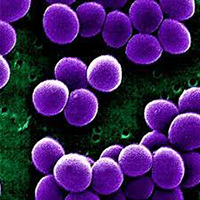Microbiological profiles of tracheostomy patients: a single-center experience
Keywords:
microbial colonization, methicillin-resistant Staphylococcus aureus, tracheal culture, tracheostomy, tracheotomyAbstract
Background: This study compared the prevalence of common microorganisms in obstructed and non-obstructed cases across the four quarters on the first post-tracheostomy year.
Methods: A retrospective chart review of the microbiological profiles of all adult patients who underwent a tracheostomy was conducted between June 2015 and September 2019 at our hospital. Based on the tracheostomy indications, patients were allocated to obstructed or non-obstructed group. Any patient with at least one positive sample was followed up quarterly for a year. The first culture result obtained was recorded at least one month following the last antibiotic dose in each quarter.
Results: Out of the 65 tracheal aspirate results obtained from 58 patients (mean age, 57.5±16.48 years), the most common procedure and indications were surgical tracheostomy (72.4%) and non-obstructed causes (74.1%), respectively. Moreover, 47.7% of the culture results indicated Pseudomonas aeruginosa, which showed significantly different proportions across the quarters (p=0.006). Among obstructed patients, P. aeruginosa was the most common (35%), followed by methicillin-resistant Staphylococcus aureus (MRSA; 23.5%).
Conclusions: The most common post-tracheostomy microorganism was P. aeruginosa. MRSA showed a strong association with tracheostomy for obstructive indications.
References
Morar P, Singh V, Jones AS, Hughes J, van Saene R. Impact of tracheotomy on colonization and infection of lower airways in children requiring long-term ventilation: a prospective observational cohort study. Chest 1998;113:77-85.
Baiu I, Backhus L. What is a tracheostomy? JAMA 2019;322:1932.
Durbin CG. Tracheostomy: why, when, and how? Respir Care 2010;55:1056-68.
Harlid R, Andersson G, Frostell CG, Jörbeck HJ, Ortqvist AB. Respiratory tract colonization and infection in patients with chronic tracheostomy: a one-year study in patients living at home. Am J Respir Crit Care Med 1996;154:124-9.
Ewig S, Torres A, El-Ebiary M, Fábregas N, Hernández C, González J, et al. Bacterial colonization patterns in mechanically ventilated patients with traumatic and medical head injury: incidence, risk factors, and association with ventilator-associated pneumonia. Am J Respir Crit Care Med 1999;159:188-98.
Leone M, Delliaux S, Bourgoin A, Albanèse J, Garnier F, Boyadjiev I, et al. Risk factors for late-onset ventilator-associated pneumonia in trauma patients receiving selective digestive decontamination. Intensive Care Med 2005;31:64-70.
George DL, Falk PS, Wunderink RG, Leeper KV Jr, Meduri GU, Steere EL, et al. Epidemiology of ventilator-acquired pneumonia based on protected bronchosconic sampling. Am J Respir Crit Care Med 1998;158:1839-47.
Niederman M, Ferranti RD, Zeigler A, Merrill WW, Reynolds HY. Respiratory infection complicating long-term tracheostomy. The implication of persistent gram-negative tracheobronchial colonization. Chest 1984;85:39-44.
Statham MM, de Alarcon A, Germann JN, Tabangin ME, Cohe AP, Rutter MJ. Screening and treatment of methicillin-resistant Staphylococcus aureus in children undergoing open airway surgery. Arch Otolaryngol Head Neck Surg 2012;138:153-7.
Gucyetmez B, Atalan HK, Cakar N. Elective tracheotomy practices in Turkey. PLoS One 2016;11:1-12.
Ramakrishnan N, Singh JK, Gupta SK, Bhalla V, Singh DK, Raina S, et al. Tracheostomy: open surgical or percutaneous? An effort to solve the continued dilemma. Indian J Otolaryngol Head Neck Surg 2019;71:320-6.
Gilyoma JM, Balumuka DD, Chalya PL. Ten-year experiences with tracheostomy at a university teaching hospital in Northwestern Tanzania: a retrospective review of 214 cases. World J Emerg Surg 2011;6:1-7.
Özmen S, Özmen ÖA, Ünal ÖF. Pediatric tracheotomies: a 37-year experience in 282 children. Int J Pediatr Otorhinolaryngol 2009;73:959-61.
Mahadevan M, Barber C, Salkeld L, Douglas G, Mills N. Pediatric tracheotomy: 17 year review. Int J Pediatr Otorhinolaryngol 2007;71:1829-35.
Douglas CM, Poole-Cowley J, Morrissey S, Kubba H, Clement WA, Wynne D. Paediatric tracheostomy – An 11 year experience at a Scottish paediatric tertiary referral centre. Int J Pediatr Otorhinolaryngol 2015;79:1673-6.
Hadfield PJ, Lloyd-Faulconbridge RV, Almeyda J, Albert DM, Bailey CM. The changing indications for paediatric tracheostomy. Int J Pediatr Otorhinolaryngol 2003;67:7-10.
Campisi P, Forte V. Pediatric tracheostomy. Semin Pediatr Surg 2016;25:191-5.
Bartlett JG, Faling LJ, Willey S. Quantitative tracheal bacteriologic and cytologic studies in patients with long-term tracheostomies. Chest 1978;74:635-9.
Lepainteur M, Ogna A, Clair B, Dinh A, Tarragon C, Prigent H, et al. Risk factors for respiratory tract bacterial colonization in adults with neuromuscular or neurological disorders and chronic tracheostomy. Respir Med 2019;152:32-6.
Cader SHA, Shah FA, Nair SKGR. Tracheostomy colonisation and microbiological isolates of patients in intensive care units-a retrospective study. World J Otorhinolaryngol Head Neck Surg 2020;6:49-52.
Kumar KD, Singh KB. Clinical analysis of bacterial flora of lower respiratory tract immediately after tracheostomy and during first tube change: a prospective observational study. Asian Pacific J Heal Sci 2019;6:44-51.
Marchese S, Corrado A, Scala R, Corrao S, Ambrosino N, Intensive Care Study Group, et al. Tracheostomy in patients with long-term mechanical ventilation: a survey. Respir Med 2010;104:749-53.

Published
Issue
Section
License
Mattioli 1885 has chosen to apply the Creative Commons Attribution NonCommercial 4.0 International License (CC BY-NC 4.0) to all manuscripts to be published.




